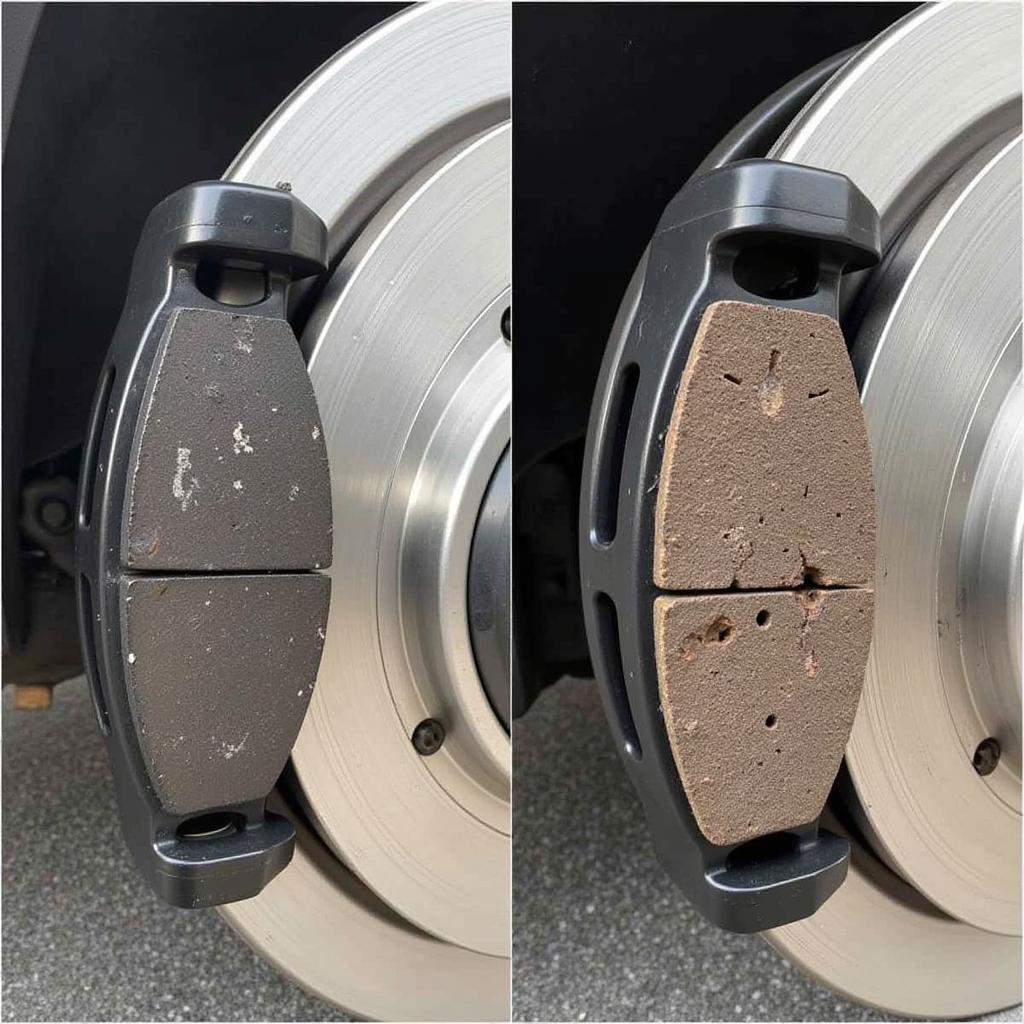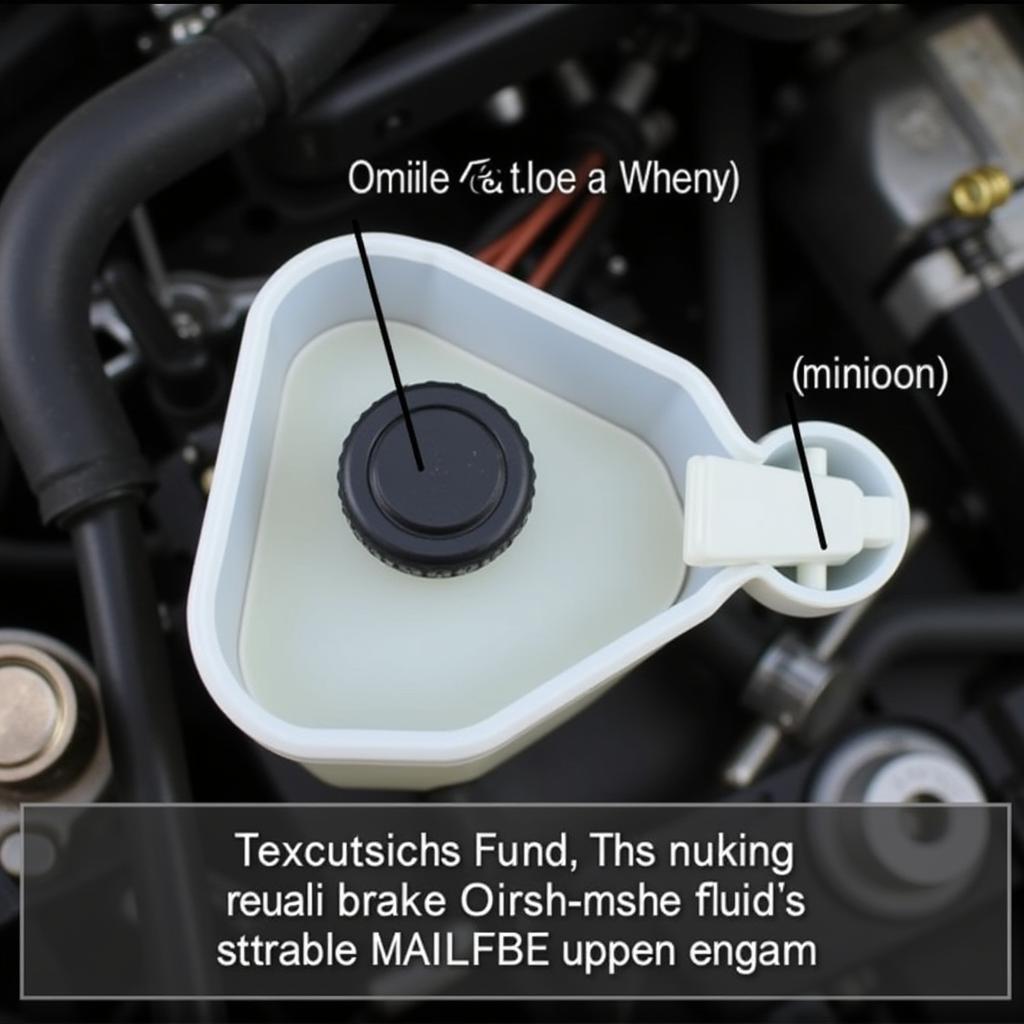A brake warning light on your Saturn Outlook dashboard can be a jarring sight. While it might seem like a cause for panic, understanding the potential reasons behind this warning and the steps you can take is crucial for a safe and efficient resolution. This article explores the common culprits behind the Saturn Outlook brake warning and guides you through the diagnostic and repair process, whether you’re a DIY enthusiast or seeking professional help.
Decoding the Brake Warning Light
Before diving into the specifics of the Saturn Outlook, it’s important to understand that a brake warning light can indicate various issues within your vehicle’s braking system. While some might be minor, others can significantly impact your safety.
Here’s a breakdown of potential causes for the brake warning light in your Saturn Outlook:
-
Low Brake Fluid: This is one of the most frequent reasons. Brake fluid is essential for transferring force from the brake pedal to the wheels, enabling your vehicle to stop. A leak in the brake lines or a worn-out master cylinder can lead to low brake fluid levels, triggering the warning light.
-
Worn Brake Pads: Brake pads are designed to wear down over time. When they become too thin, they lose their effectiveness in gripping the brake rotors, reducing braking efficiency and triggering the warning light.
-
Faulty Brake Sensors: Modern vehicles like the Saturn Outlook have sensors that monitor the condition of various components, including brake pads. If a sensor malfunctions or detects an issue, it will activate the warning light.
-
ABS Issues: The Anti-lock Braking System (ABS) is vital for preventing wheel lockup during hard braking. Problems within the ABS module, wheel speed sensors, or wiring can illuminate the brake warning light.
-
Parking Brake Engaged: It might seem obvious, but a partially engaged parking brake can trigger the warning light. Always ensure the parking brake is fully disengaged before driving.
Diagnosing the Problem
Identifying the root cause of the brake warning light is essential for a successful repair. While some issues might be visually identifiable, others require more in-depth inspection:
-
Check Brake Fluid Level: Locate the brake fluid reservoir under the hood. The reservoir will have minimum and maximum level markings. If the fluid is below the minimum, carefully add the recommended brake fluid type for your Saturn Outlook.
-
Inspect Brake Pads: If possible, visually check the brake pads through the wheel spokes. Look for significant wear or if the pad material is close to the metal backing plate. If you’re unsure, consult a mechanic for a proper inspection.
-
Listen for Unusual Noises: Screeching, grinding, or clicking sounds during braking can indicate worn brake pads, a faulty caliper, or other brake system issues.
 Worn Brake Pads on Saturn Outlook
Worn Brake Pads on Saturn Outlook
Seeking Professional Help
While some brake-related issues might seem simple to fix, it’s crucial to remember that brakes are critical safety components. If you’re uncomfortable with any aspect of brake repair or diagnosis, it’s always best to seek professional help.
Here are situations where professional assistance is highly recommended:
-
Brake Fluid Loss: If you need to frequently add brake fluid, there’s likely a leak in the system that requires immediate attention.
-
ABS Warning Light: Issues with the ABS system require specialized diagnostic equipment and knowledge to pinpoint and repair.
-
Unusual Noises Persist: If grinding or screeching noises persist even after checking the brake pads, it could indicate a more serious problem with the calipers, rotors, or other brake components.
Expert Insight
“Many car owners underestimate the importance of regular brake system maintenance,” says John Smith, a certified automotive technician with over 20 years of experience. “A simple brake inspection during routine maintenance can detect minor issues before they escalate into major repairs, ensuring optimal braking performance and safety.”
 Saturn Outlook Brake System Inspection
Saturn Outlook Brake System Inspection
Conclusion
Ignoring a brake warning light in your Saturn Outlook can have serious consequences. By understanding the potential causes and taking the appropriate diagnostic steps, you can ensure your vehicle’s braking system remains in top condition, providing you with peace of mind and a safe driving experience. Remember, when in doubt, always consult a qualified mechanic for diagnosis and repair.

